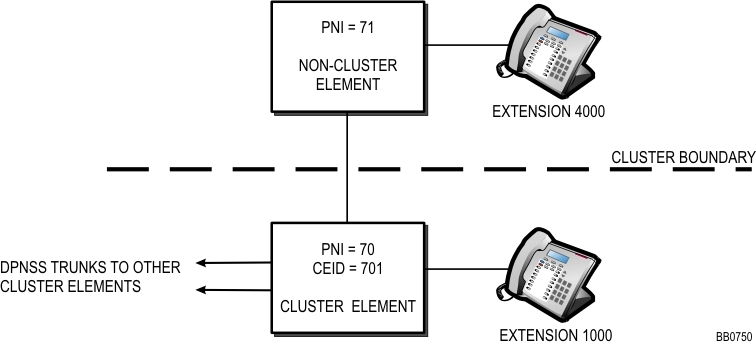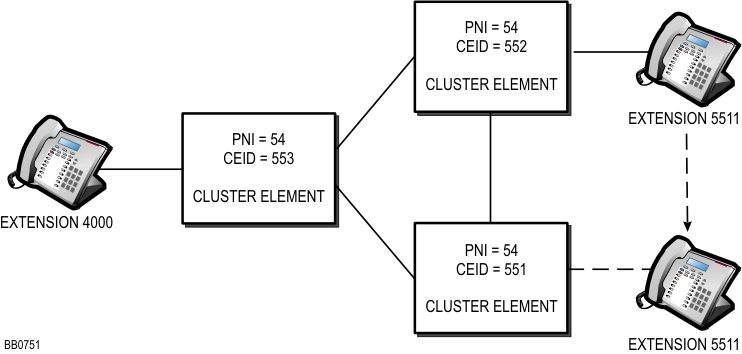
Figure 1 shows an example of a dialing conflict. On the cluster element, a dialing conflict is programmed between the element's PNI and its local CEID digits. If extension 4000 on element 71 attempts to call extension 1000 by dialing 701000, the call fails because the cluster element absorbs the CEID digits 701 and attempts to call extension 000.
Figure 1: Dialing Conflict Example 1

Figure 2 shows an example of another dialing conflict. Initially, extension 4000 can call the remote device at extension 5511 by dialing 5511 and cluster element 553 outpulses 5525511. However, if you move extension 5511 to cluster element 551, a dialing conflict is created between 551 and 5511. When extension 4000 dials 5511, the element outpulses 5515511 and the call will not go through. The call fails because the local CEID digits 551 are absorbed twice and only the digit 1 remains.
Figure 2: Dialing Conflict Example 2

To prevent dialing conflicts:
If a network uses PNIs that begin with digit x, ensure that the network does not have local directory numbers that begin with digit x. For example, if a network uses 2-digit PNIs that begin with digit 7 and has 4-digit directory numbers, do not use the numbers 7000 to 7999 for local directory numbers. This practice prevents dialing conflicts between PNIs and local numbers.
If a network uses CEID digit strings that begin with digit x, ensure that the cluster does not have local directory numbers that begin with digit x. This practice prevents dialing conflicts between CEID digit strings and directory numbers.
If you are adding a cluster to an existing network that uses 2-digit node identifiers in a specific range of numbers, for example 70 through 79, find a number in the range of 70 to 79 that is not used as a PNI, for example 73. Then, reserve 7300 through to 7399 for CEID digit strings within the network.
If a network uses 2-digit PNIs and all the combinations are already used as PNIs, identify and reserve a block of numbers the same length as the network's numbering plan for CEID digits.
If you want to minimize the use of a network's local directory numbers, identify and reserve one number equal in length to the network's local numbers. Then append two additional digits to that number to provide a range of up to 100 CEID digit strings that do not conflict with any local directory number in the network.
